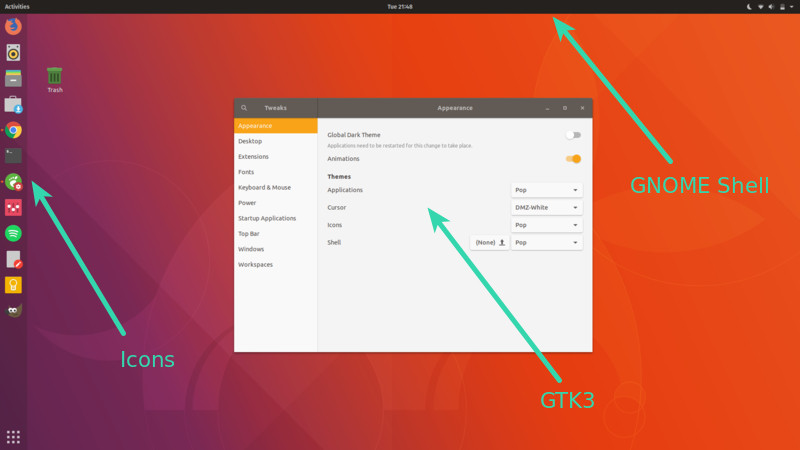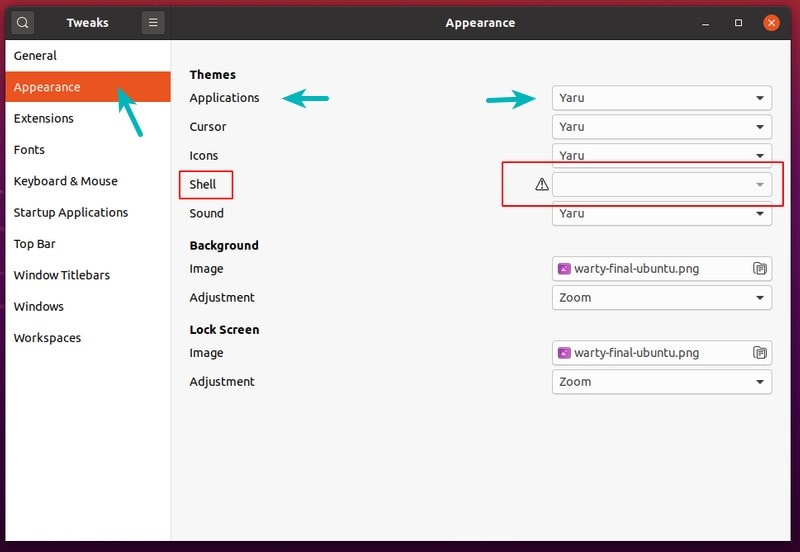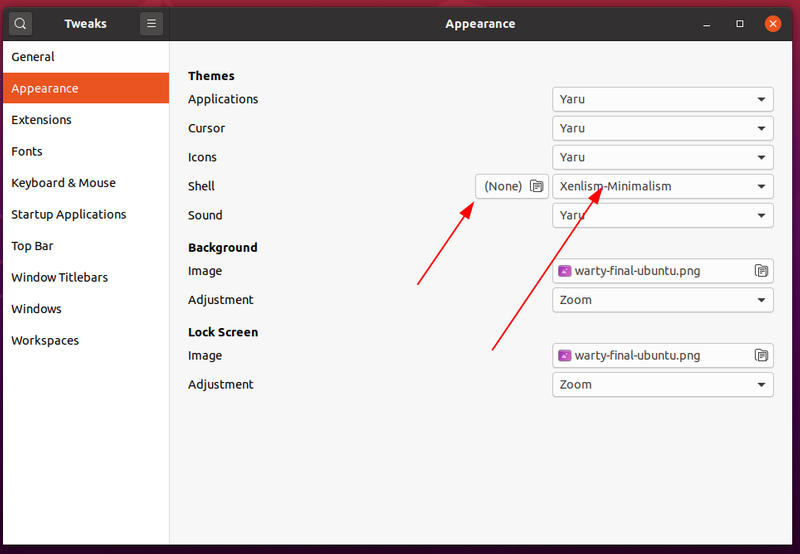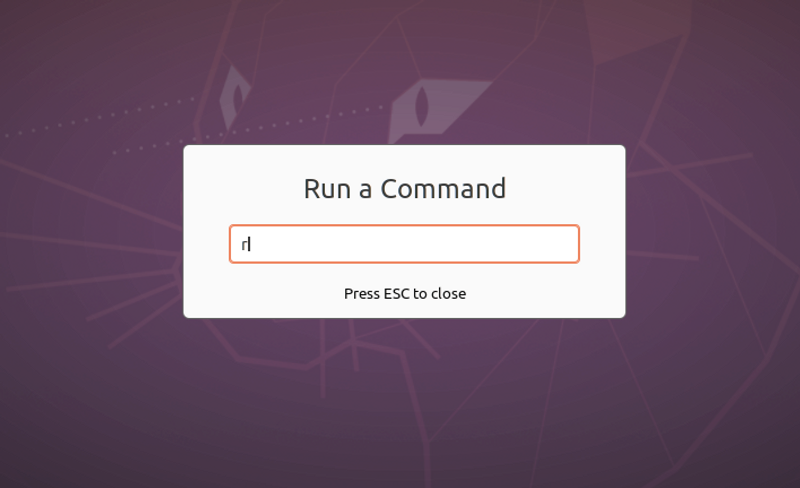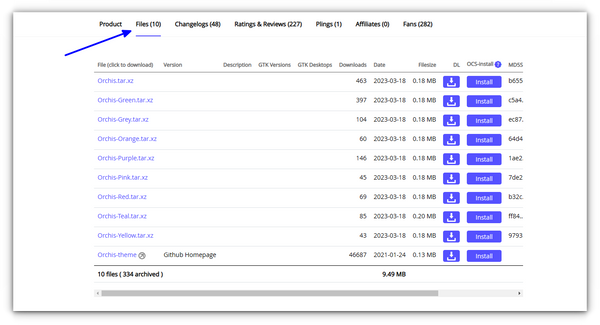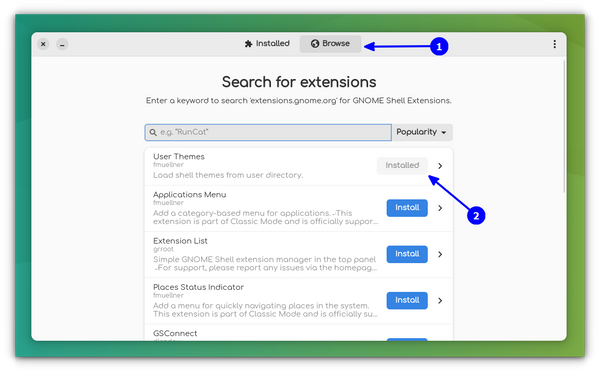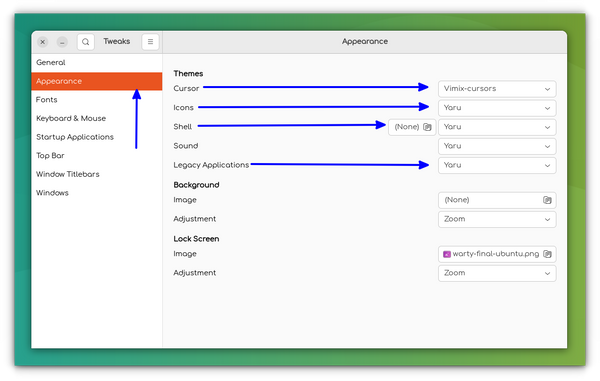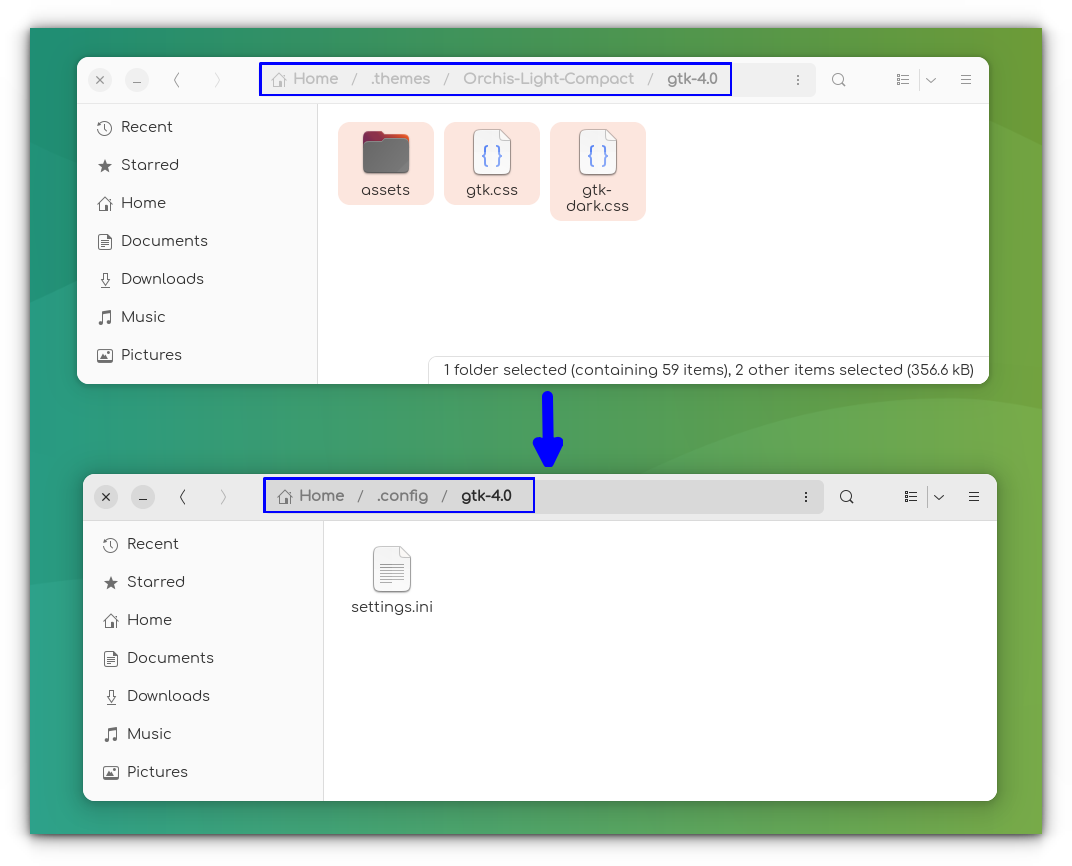- How to Install and Change GNOME Theme in Linux
- Installing themes in GNOME
- Download GNOME themes
- Change GNOME theme with GNOME Tweaks tool
- Troubleshoot: Not able to select GNOME Shell theme in GNOME Tweaks tool
- How to Install Themes in Ubuntu Linux
- Theme elements: Icon themes, GTK themes and GNOME Shell themes
- Step 1: Install themes in Ubuntu
- Step 2: Change themes in Ubuntu GNOME desktop
- Troubleshooting: Theme doesn’t change for GTK4 apps
- Customize as much as you like
How to Install and Change GNOME Theme in Linux
By changing your GNOME theme, you can give your Linux desktop a brand-new look and feel.
In this tutorial, I’ll show you how to install new themes on a Linux system running GNOME desktop environment.
There are two aspects of GNOME theme:
- Application theme: changes the appearance of the application windows
- Shell theme: changes the shell elements like the top panel, system tray, message tray and notifications
I’ll show you how to change both aspects of a GNOME theme in this tutorial.
Installing themes in GNOME
Before you go on downloading the themes, you should make sure of a few things as prerequisite.
There are two places the themes files can be placed:
- ~/.themes : You may have to create this folder in your home directory if it doesn’t exist. The themes placed here will be available only to you (the logged in user)
- /usr/share/themes: The themes put in this folder will be available to all the users on your system. You need to be root to put files in this folder.
Normally, I suggest going with the former one which is ~/themes.
To do that, go to your Home directory. Press Ctrl+H to show hidden files and folders. If you don’t see the .themes directory, create it.
Alternatively, use this command in the terminal to create this directory:
The next thing you should make sure of is to have GNOME Tweaks tool installed on your system otherwise you won’t be able to change the theme. You can use your distribution’s software center or package manager to install it.
Download GNOME themes
First thing first, you need to get some good GNOME themes. You can find plenty on the Gnome-look website.
If you want suggestions, please have a look of our list of the best GNOME themes.
Extract the downloaded theme file. Copy the folder and paste it in the .themes folder of your home directory (that you had created earlier).
Change GNOME theme with GNOME Tweaks tool
Once you have installed new themes, it is time to see how to use this new GNOME theme. You have GNOME Tweaks tool installed for this purpose.
Press Super key (Windows key) and search for GNOME Tweak Tool. Click on it to open it.
Now under Appearance section, you should see the options to change icons, applications and shell themes.
You’ll see that while it is easy to change the Applications theme, the Shell theme has a warning sign in front of it and you cannot change it.
Don’t worry. This can be ‘fixed’. Let me show you how to do it in the next section.
Troubleshoot: Not able to select GNOME Shell theme in GNOME Tweaks tool
If you see an exclamation mark and you can not select themes in it, you need to an exra step.
Don’t worry. It’s not a big deal. You need to install GNOME Shell Extensions to fix this issue. Use the following command in the terminal:
sudo apt install gnome-shell-extensionsAfter installing the extensions, go to Extensions->User Themes and turn it on.
In case the User Theme does not appear after installing the extension, then try logging out or rebooting.
Also, in case if the GNOME Shell extension does not work for you at all, you can try out the Gnome Shell Browser extension.
Once you enable the extension, click on the User themes and toggle on the off button, and you are all done. Also, to know more about the GNOME extension, you can have a look at the How to Use GNOME Shell Extensions guide.
Now, you should be able to install the themes as described earlier.
The theme change should reflect immediately. If you do not see the theme changes immediately, press Alt+F2 key or FN+ALT+F2 key.
It will open a command box. Just type ‘r’ in it. This will restart the GNOME shell and the selected theme should be applied.
You can get plenty of GNOME Shell themes from Gnome-look website. But beware that not all themes might be compatible with your version of GNOME Shell.
Also, some poor packaged themes contain nested subfolders and sometimes you’ll have to copy the subfolders to the ~/.themes directory.
I hope this helps you to easily and correctly install themes in GNOME. Any questions or suggestions are always welcomed.
How to Install Themes in Ubuntu Linux
This beginner’s guide shows you how to install themes in Ubuntu. The tutorial covers the installation of icon themes, cursor themes, GTK themes and GNOME Shell themes.
Ubuntu looks good but it can be tweaked to look better. One of the reasons why I like using Linux is the flexibility of customization. Changing themes gives the system an entirely new look and feel. And the best thing is that there are tons of good themes for Ubuntu and other Linux at your disposal. You can play with them as you like. In this tutorial, I’ll show you various types of theme customization and ways to install them. Of course, I’ll discuss how to change the themes in Ubuntu. Let’s start with the type of theme elements.
Theme elements: Icon themes, GTK themes and GNOME Shell themes
This is the default look of Ubuntu 22.10: 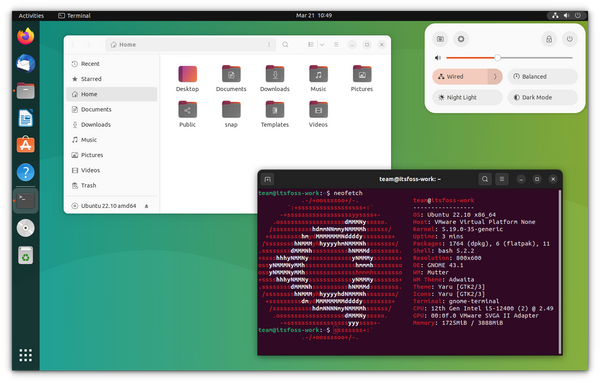
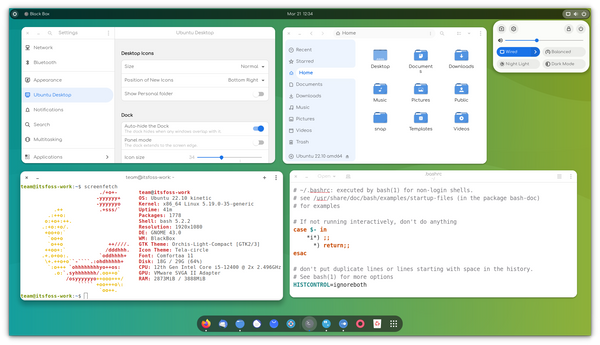
- Get the themes on your system
- Changing the current theme through the GNOME Tweaks tool
Step 1: Install themes in Ubuntu
Just for your information, I’ll use the term ‘themes’ for all four i.e., icons, GTK, cursors and GNOME Shell themes, unless individually specified.
I have also made a video about installing themes in Ubuntu 18.04 which is valid for 20.04 and some higher versions as well. You can watch the video to see the things in action. Do subscribe to our YouTube channel for more Ubuntu tutorials.
Once you have downloaded it, you’ll have to do one extra stuff here.
Go to your Home directory and press Ctrl+H to show hidden files and folders. If you see .themes and .icons folders, you are good. If not, create new folders named .themes and .icons .
You can use the command below if you want:
Now, remember that when you download the archived version of GTK or GNOME Shell theme, extract it and copy the extracted folder to the .themes folder in your home directory. If you download an archived version of an icon or cursor theme, extract it and copy the extracted folder to the .icons folder in your home directory.
- .themes – for GTK and GNOME Shell themes
- .icons – for icon and cursor themes
Well, you have just learned how to install themes in Ubuntu. It’s time to see how to change the themes here.
Step 2: Change themes in Ubuntu GNOME desktop
You’ll have to use the GNOME Tweaks and Extension manager app for this purpose. It is available in the software center. Just search for it and install it.
If you prefer using terminal, you can use the command below to install GNOME Tweaks:
sudo apt install gnome-tweaks gnome-shell-extension-managerOnce installed, just search for Extension manager and open it. Go to the Browse tab and install the user themes extension.
Now, open GNOME Tweaks.
When you start Tweaks, you’ll see the options to change the icon, GTK and Shell theme under the Appearance section. GTK theme is changed from the Legacy Applications option and the shell theme is changed from the Shell option.
Some themes have a nested directory structure. If you copy them all in ~/.themes, they might not be visible in GNOME Tweaks. In that case, you should try to copy the correct folder, which may be down in the hierarchy.
Troubleshooting: Theme doesn’t change for GTK4 apps
When you change themes using the above method, you may sometimes notice that the themes of some apps are not changed, especially in Ubuntu 22.10 and later version, where GTK4 versions of the Nautilus file manager, system settings etc. are used.
You can apply your theme to these apps also. But for the moment, it needs manual intervention.
Firstly, you should ensure that the theme supports GTK4.
If it supports GTK 4, you may find a folder named gtk-4.0 inside the extracted theme folder.
Copy the contents of this folder to the ~/.config/gtk-4.0 directory.
Many themes that support the GTK4 libadwaita, provide a way to install their themes on their respective repositories. So, you can visit your favorite theme repo to learn more.
You may have to do special efforts for Flatpak applications as well if you want a completely changed look for all elements of your system.
Customize as much as you like
Changing the theme in Ubuntu is not a complicated process. You just have to download the icon and theme files and extract them to the designated locations.
Looking for some recommendation?
Here are some GTK themes you can try.
And if you are looking for dark themes, we’ve got a separate list for you:
Changing themes is just one way of customizing Ubuntu. There are several other ways you can try.
I hope you find this tutorial helpful. Let me know if you need any help.
